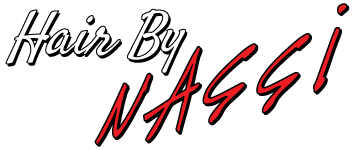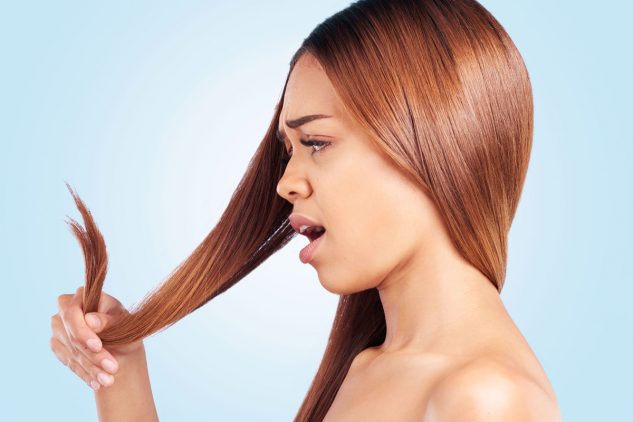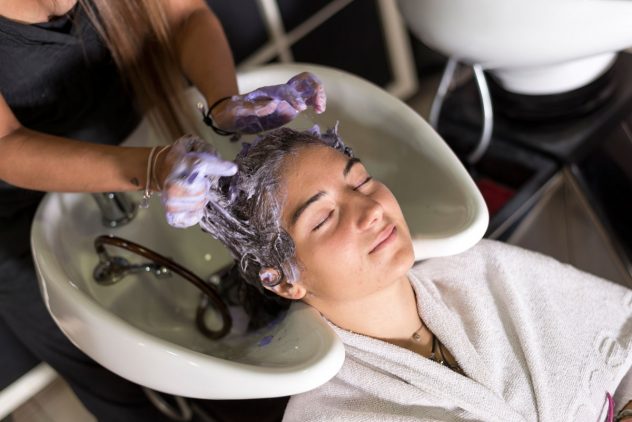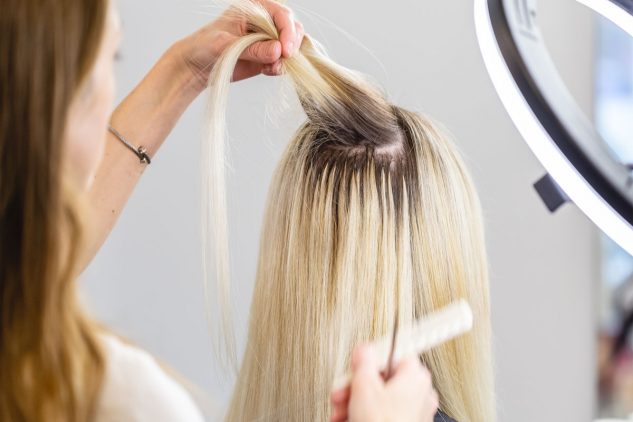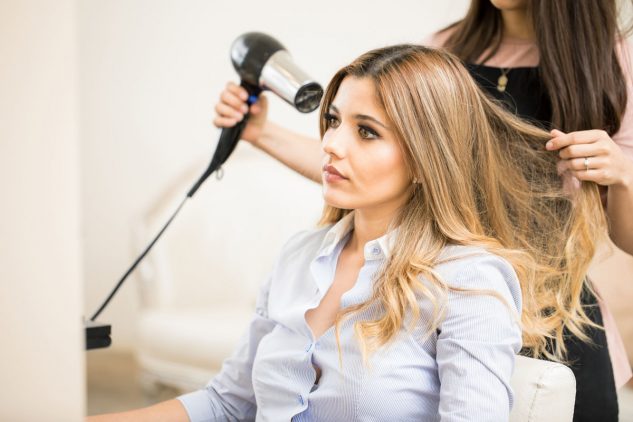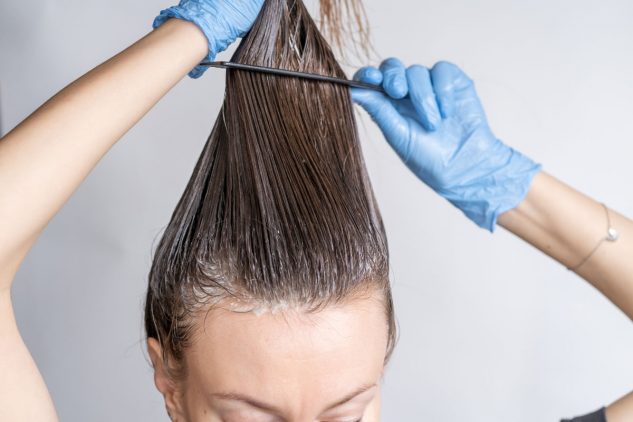How to Stop Hair Breakage
Hair breakage could be the cause of heat, stress, pre-existing conditions, and more. discover what might be the cause of your hair breakage and how to prevent or stop it. So, how do I stop hair breakage?
Hair breakage has a lot of different causes. Healthy hair is dependent on an inner cuticle with overlaying scales keeping your locks together.
If these scales start falling apart, your hair can get dry and ultimately separate, resulting in damage. This elicits breakage, together with other symptoms, like fizziness and dryness.
What Causes Hair Breakage?
Discover more concerning some of the 12 most common causes of hair breakage and what you can do concerning them.
1. Diet
There is a lot to the old adage “you are what you eat,” particularly regarding hair and skin health.
Particular nutrients aid in your hair growth and fend off breakage from damage. Be sure you are taking in plenty of iron, zinc, and folic acid through your daily diet.
Proper antioxidants (found in plant foods) and protein could also keep your hair free from damage. Particular vitamins could additionally help hair growth.
2. Stress
There’s a plethora of evidence demonstrating links between stress and losing hair, but it’s additionally known that stress can result in hair breakage.
Telogen effluvium is a typical kind of alopecia caused by stress seemingly linked to hair damage. This kind of stress is going to make your follicles go inactive, so hair that’s in the halfway point of a growth cycle could break off. You might see older hair fall out, too.
Managing your stress could lead to healthier hair.
3. Dryness
Typically, dry hair could be one of the factors behind damage and breakage.
It can also be caused by different factors, such as low humidity, dry weather, and excessive heat. Make sure to use warm and not hot water when you wash your hair — hot water can lead to additional drying.
If your tips are dry, think about concentrating shampoo on just your scalp. Skipping conditioner is not wise. Think about trying a hair mask on the mids and tips of your hair.
If you’re tight on time, spritz on a leave-in conditioner prior to combing wet hair.
4. Heat Damage
To get the best results out of your hair dryer, flat iron, or curling iron, you require high heat. Nevertheless, when you use these devices improperly or too much, you risk damaging the cuticle from excessive temperatures.
One of the ways to stop heat damage is to lay off your locks from all styling devices to a minimum of once a week. To decrease heat-related damage from your styling devices, choose ceramic versions — these types heat up more uniformly, so you won’t have to continually use them on the same areas of hair over and over.
It’s also vital to safeguard your hair prior to applying the heat. Use a heat-protecting spray to decrease damage.
5. Over-Processing
Relaxers, perms, professional straightening, and hair coloring can all make your hair seem healthier following the initial session or two. However, if you do these services too frequently, the cuticle can break down, causing hair damage.
Permanent hair dye can also react with your scalp and possibly cause contact dermatitis.
The American Academy of Dermatology advises prolonging the time between your sessions to eight to ten weeks, when possible. During this time, try a hair mask to prolong your results.
6. Over-Washing
If you have oily skin, you are additionally more likely to have excessive sebum (natural oil) production in your scalp. This could lead to the enticement to wash your hair more frequently than you need to.
Whereas washing daily is okay when you have oily hair; however, you should not wash your hair several times each day. Then again, excessively dry hair may only need weekly shampooing.
Additionally, make sure you shampoo carefully at the scalp and apply conditioner lightly from your tips to your roots.
7.Towel Drying Improperly
When stepping out of the shower, it’s a natural reaction to use a towel on your skin and hair. Nevertheless, this rubbing motion honestly damages your hair when it’s most vulnerable (after being wet).
Rather than rubbing moisture out of your hair, blot an absorptive towel throughout your hair as an alternative. You can additionally place a towel on your hair as a brief means for absorbing excess water.
8. Elastic Hair Ties
Elastic hair ties are essential for keeping your hair out of your face when carrying out various tasks. And, at the end of the day, they can prove useful on bad hair days or when you’re in a rush.
The main issue with hair ties is that they pull on your scalp and hair cuticles. You might even notice some hair falling out each time you are undoing your ponytail.
You can remedy this by wearing your hair down from time to time, or by making your updo a little looser so it won’t pull on your hair as much.
Additionally, be sure you’re using real hair ties and not just rubber bands that could damage your hair.
9. Improper Brushing and Combing
You might have noticed people say that brushing your locks one hundred strokes a day is beneficial for your hair, however, the AAD says that is not true. They suggest that you instead just brush and comb when you’re styling your hair.
One older 2009 clinical trial discovered that brushing less often led resulted in decreased hair loss in women.
Be sure you use wide-toothed combs to hinder breakage. You should additionally only use a brush when your hair is dry and try to avoid using plastic bristled brushes. Rather try a brush with natural bristles.
10. Scarceness Of Hair Trims
It might seem like getting your hair cut can damage it. Unexpectedly, hair trims could help keep your hair healthy and free from split ends.
Think of a hair trim like a skin exfoliation — in both cases, you might need to eliminate some of the older cells helping new ones grow. If you have split ends, those splits in the cuticle can proceed up the rest of the length of your hair and potentially to breakage.
Visit your stylist around every 8 weeks, subject to length of your hair and its texture. Even if you’re growing your hair out, having damaged ends trims could stop further breakage.
11. Hypothyroidism
Hypothyroidism happens when your thyroid gland does not produce adequate thyroid hormones. Even though the thyroid itself is small in size, it plays a huge role in keeping your body operational. Including your heart rate, metabolism, and even your hair growth.
People that have low thyroid could see too much hair damage and loss, particularly when showering or following brushing. When you have dry, damaged hair together with low energy, unexpected weight gain, and depression, see your health care provider for a thyroid check-up.
12. Eating Disorders
If you or someone dear to you is dealing with an eating disorder, hair damage is a potential symptom.
Since some eating disorders can be the cause of malnourishment, such as bulimia nervosa and anorexia. In these cases, hair follicles don’t have the nutrients they require to develop new hair, and the process is altogether terminated. You might even notice new hairs that break off in the middle of a growth cycle.
Eating disorders can result in even more serious consequences and require medical attention. Reading into personal stories of those that have overcome eating disorders could help inspire you or someone dear to you to seek treatment.
Tips for Healthy Hair
To hinder future hair breakage, think about the following hair care tips:
- Wash and condition your hair each day, but carefully.
- Utilize swimmer’s shampoo and conditioner bundle after swimming.
- Try to allow your hair to air dry whenever possible.
- Be sure all extensions and weaves are mild, so they don’t pull on your scalp.
- Think about a new hairstyle that requires less harmful maintenance.
- Eat a nutrient-rich diet to be sure your hair gets all the nutrients it requires.
- Stop wearing tight hats as a fashion statement — save these for just sun protection.
Looking for hair treatments in Mesa or Scottsdale? Hair by Nassi can help! Contact us today for a free consultation.
